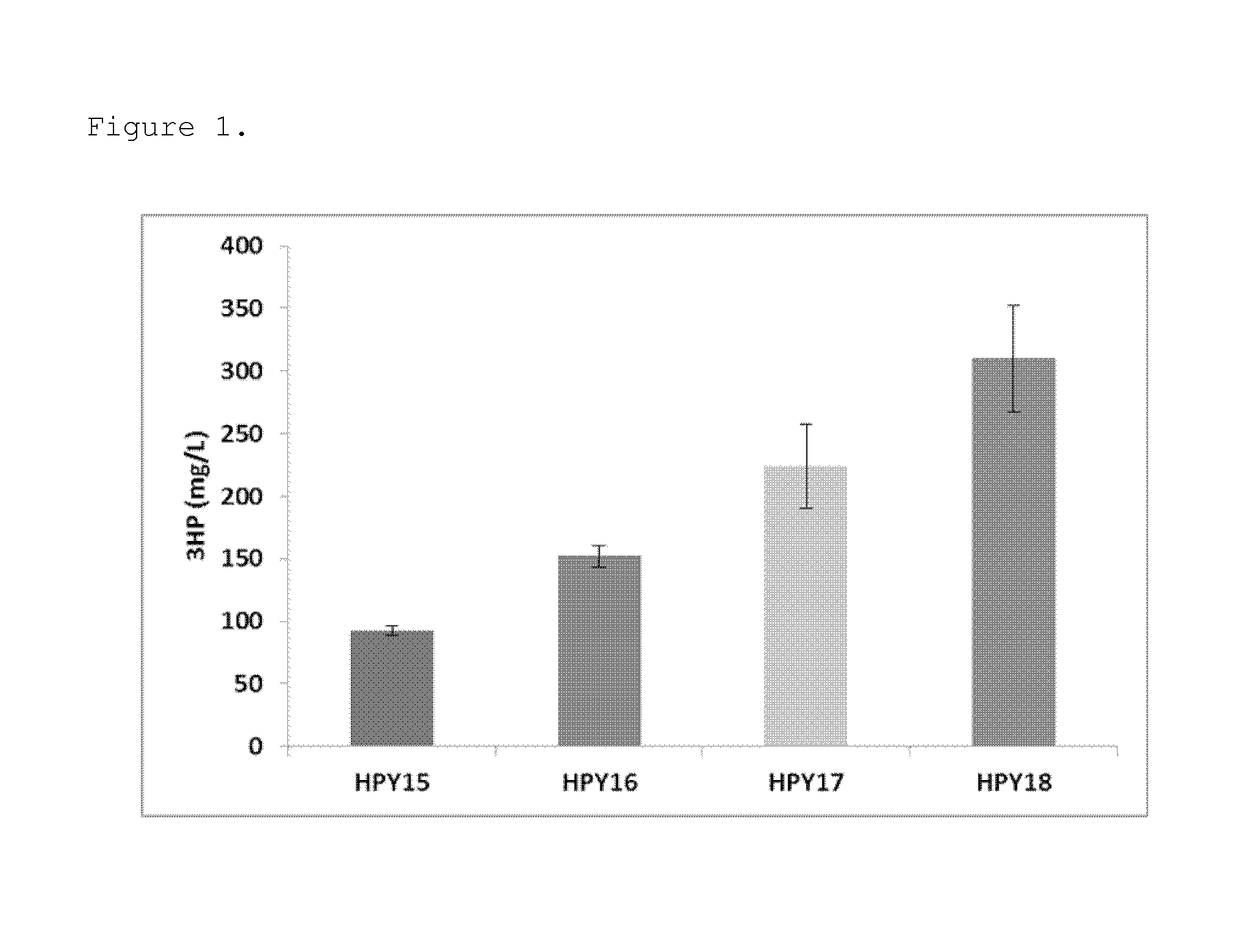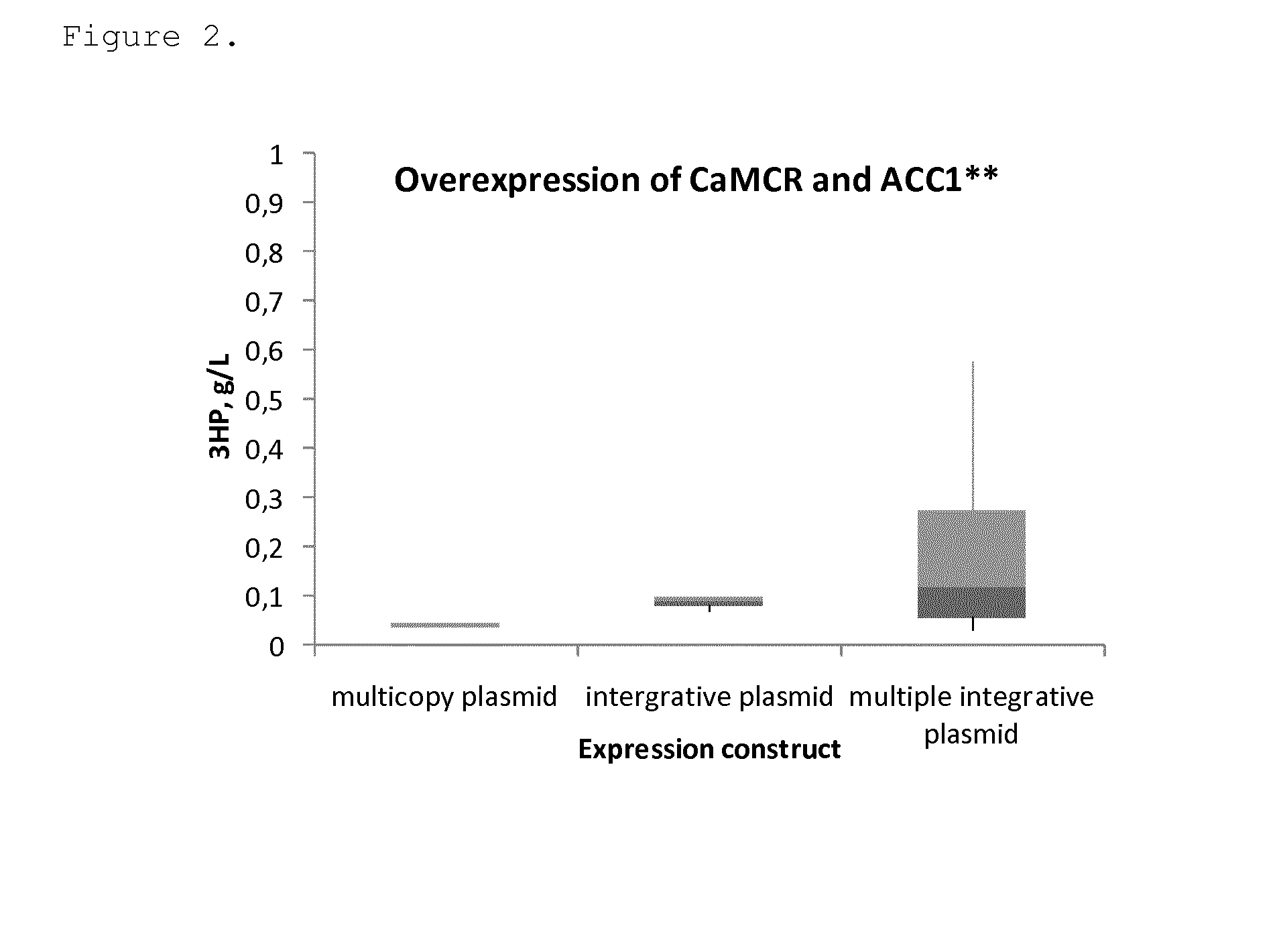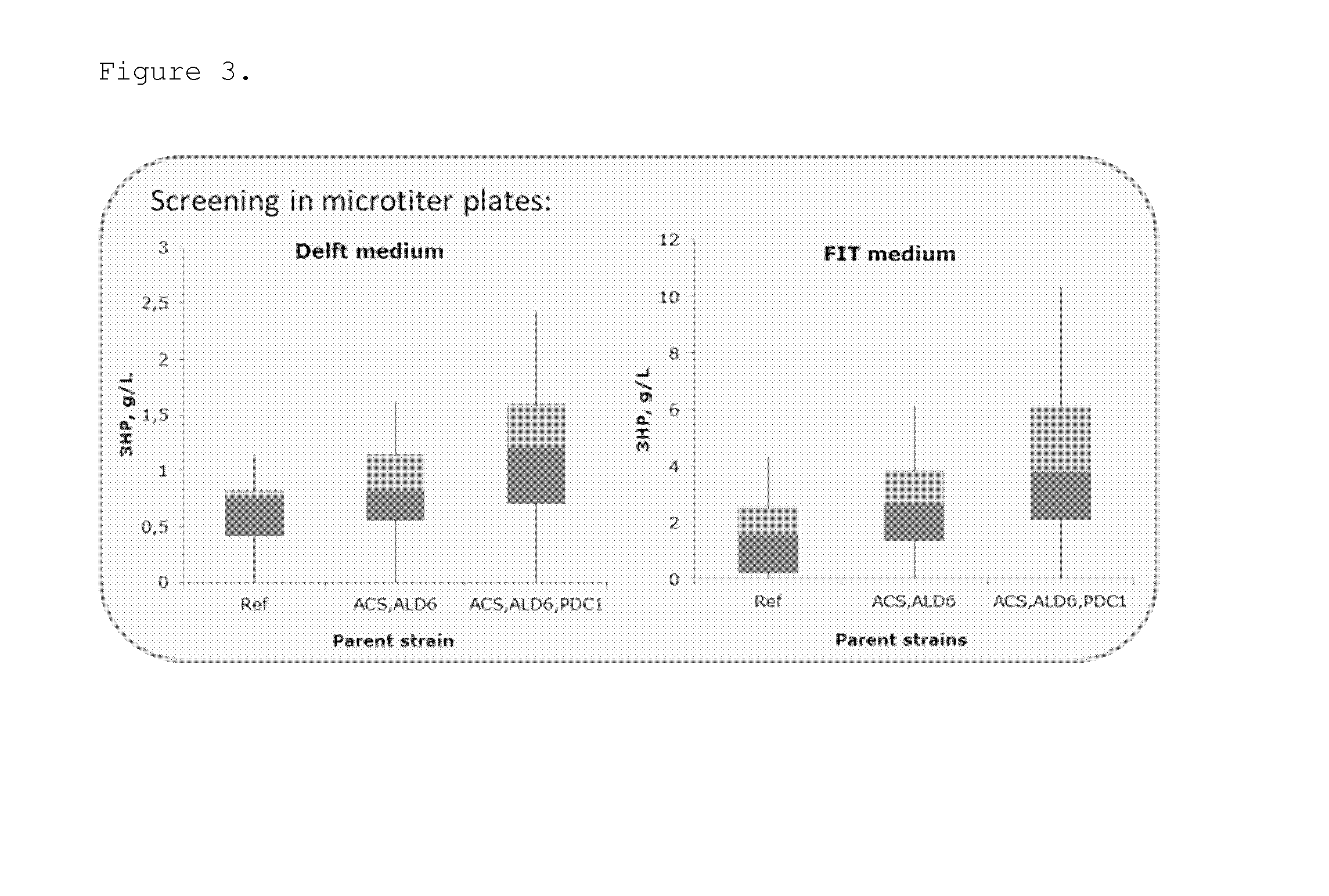Microbial production of 3-hydroxypropionic acid
a technology of 3-hydroxypropionic acid and microbial production, which is applied in the direction of oxidoreductases, biochemistry apparatus and processes, enzymes, etc., can solve the problems of difficult control of the process, the supply of fossil fuels will be outweighed by the demand, and the new discoveries of fossil fuel deposits are diminishing
- Summary
- Abstract
- Description
- Claims
- Application Information
AI Technical Summary
Benefits of technology
Problems solved by technology
Method used
Image
Examples
example 1
f Over-Expression Targets into Expression Plasmids
[0037]All plasmids listed in table 3 were generated by USER cloning using PCR generated gene fragments, which were amplified according to table 2. The typical USER reaction was as follows: 1 μl of linearized and nicked parent plasmid was mixed with 1 μl of promoter fragment, 2 μl of gene fragment, 0.5 pl Taq polymerase buffer, 0.5 pl USER enzyme (NEB). The mix was incubated at 37° C. for 25 min, at 25° C. for 25 min and transformed into chemically competent E. coli DH5alpha. The clones with correct inserts were identified by colony PCR and the plasmids were isolated from overnight E. coli cultures and confirmed by sequencing.
[0038]The expression plasmids were transformed into S. cerevisiae cells using the lithium acetate transformation protocol. The cells were selected on synthetic complete (SC) agar medium without uracil, histidine and leucine.
example 2
gineering Acetyl-CoA Carboxylase for Improving the Production of 3-Hydroxypropionic Acid
[0039]Ser659 and Ser1157 of ACC1 were identified as two putative phosphorylation sites according to the phosphorylation recognition motif (Hyd-X-Arg-XX-Ser-XXX-Hyd) for yeast Snf1 (Dale, S. et al, 1995). One of which, Ser1157 was verified by a phosphoproteome study (Ficarro, S. et al, 2002). Ser659 has not been reported through experimental data so far. Therefore, we have constructed mutated ACC1 with either one or two assumed phosphorylation sites.
[0040]The endogenous ACC1 gene (wild-type) encoding acetyl-CoA carboxylase was amplified from genomic DNA of CEN.PK.113-5D by PCR with Phusion high-fidelity polymerase. The primers are listed in Table 1. The single mutatation ACC1Ser1157Ala and double mutation ACC1Ser659Ala, Ser1157Ala were introduced by oligonucleotide primers. Three versions of ACC1 were digested with NotI and SacI, and then ligated into the corresponding sites of pSP-GM2 (Chen et al...
example 5
Increasing the Pool of Available NADPH on the Production of 3-Hydroxypropionic Acid
[0049]The effect of increasing NADPH supply on the production of 3-hydroxypropionic acid was tested. The gapN gene from Streptococcus mutants, which encodes non-phosphorylating NADP-dependent glyceraldehyde-3-phosphate dehydrogenase, was codon optimized and synthesized by GeneScript (Piscataway, N.J., USA). The gene gapN was cloned into pIYCO4 (Chen et al., 2013) using the restriction sites NotI and SacI, resulting in plasmid pJC2. Plasmids pJC2 and pYC1 were transformed into CEN.PK 113-11C, forming the recombinant yeast strain HPY09. It was found that the over-expression of gapN alone resulted in a final titer of 122 mg l−1 3-HP, which is a 30% improvement compared to the reference strain (FIG. 4).
PUM
| Property | Measurement | Unit |
|---|---|---|
| Concentration | aaaaa | aaaaa |
Abstract
Description
Claims
Application Information
 Login to View More
Login to View More - R&D
- Intellectual Property
- Life Sciences
- Materials
- Tech Scout
- Unparalleled Data Quality
- Higher Quality Content
- 60% Fewer Hallucinations
Browse by: Latest US Patents, China's latest patents, Technical Efficacy Thesaurus, Application Domain, Technology Topic, Popular Technical Reports.
© 2025 PatSnap. All rights reserved.Legal|Privacy policy|Modern Slavery Act Transparency Statement|Sitemap|About US| Contact US: help@patsnap.com



